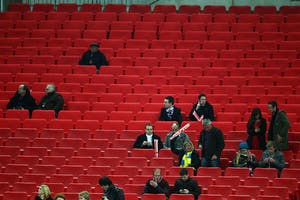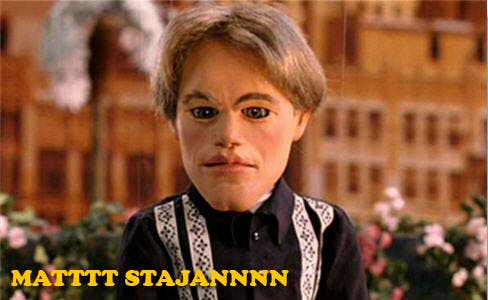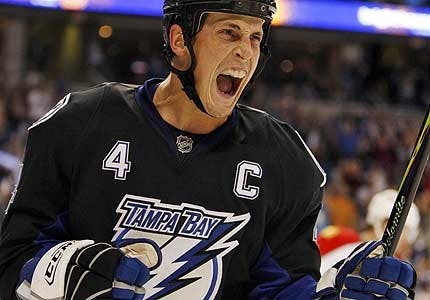How to Rebuild the Calgary Flames – A Four Year (and a bit) Plan – Part 2
By RexLibris
11 years ago
This is a continuation of a series in which I propose a method of rebuilding the Flames organization. For a frame of reference, you can go to the first in the series here.
Preparing for a shortened 2012-13 NHL season
As I mentioned in the first article, I am operating under a list of assumptions, the first of which is that the 2012-2013 season is an abbreviated one, beginning in January. A shortened season will be Kryptonite to this already borderline roster, while a cancelled one would be potentially catastrophic for the organization as a whole.
For the past two seasons, the Flames have stumbled out of the gate, posting slow starts that have hamstrung their chances for the postseason. It’s a situation that will only be exacerbated by an older roster, many of whom have not played since last April. Is it fair to say that a four-month season could result in the Flames getting a top ten draft pick, if not higher, regardless of any moves made to encourage a slide in the standings? I know this sounds inflammatory, but I believe the impact of the lockout on the roster, and in particular the older players who form much of the Flames’ core, could be more detrimental to Calgary than some other teams in their conference.
Based on the above assumption, there are a number of alterations that I would make to the roster and the short-term expectations of the club.
To begin with, prior to the season starting, I would hold a meeting with the entire team to outline a new plan. I would communicate in no uncertain terms that we would be rebuilding the team internally with a timeline of at least three years. Some players would need to find a new place to play; others would be welcome to become part of a mentorship and development program for the younger players that will inevitably be coming into the organization. Under no circumstances will this team be built, or coached, with the explicit intention of losing. Instead, that effort, accountability, balanced with an eye towards development and education would be the criteria for playing time. Rather than waste time trying to be something that we are not, I am going to build the team into what we want to become.
Any players who wished to leave the organization under these terms would be welcome, they need only meet with me and I will try my best to find them a good franchise that best meets their needs and helps further the goals of the Flames organization. All players with clauses restricting their movement would be asked to waive their agreements on the condition that I inform them of any potential moves and consult with them and their families prior to finalizing any deal. No player will be approached until a deal has neared conclusion and management will do their utmost to shield players from speculation and rumours.
I realize that this implies some hypocrisy on the part of management in the way No Trade and No Movement clauses are dealt with. I also have to face the possibility that many, if not all, of the players involved would refuse to waive their clauses outright. The return values on some of the players is, therefore, optimistic.
Beginning of the End

Therefore, we begin at the inauguration of the 2012-2013 season in January, prior to a brief training camp. The first move I make is to establish the market for Miikka Kirpusoff and Jarome Iginla. The new CBA and all the revitalization that it implies is the ideal time to begin the process of moving on from the Iginla era. I might not necessarily trade either player prior to the season starting, but the dialogue needs to begin immediately and the buyers involved need to be identified quickly. It is risky, but given the way values can often increase as the season wears on and new teams find themselves in playoff contention, beginning the process early gives me the most opportunity for a decent return.
I am very uncomfortable with this roster as it sits right now. I will be perfectly honest that the temptation exists to buy out Dennis Wideman immediately. When looking over the available free agent defencemen, however, there aren’t many, if any, who would be considered an improvement. Reluctantly, I would retain Wideman, though with an eye to trading him should the opportunity present itself.
I believe quite strongly that the league will implement changes in how it calculates and imposes a salary floor. To that end, I doubt that there will be a Dale Tallon-like buyer out there looking for a salary-floor cushion like Wideman. His contract length and salary relative to performance aren’t likely to make a move any easier, with or without a no-movement-clause.
I will also waive Anton Babchuk and pay to have him play in the AHL for the remainder of his contract. One recent NHL proposal would have had this count against the salary cap, however his cap hit isn’t my concern. My reasons for demoting him are strictly that I believe there are better, more well-rounded options available for the roster at this time.
Following this, there will be a brief free-agency period. The first free agent I would pursue would be Chris Campoli to replace Babchuk. His defensive numbers aren’t terribly exciting, but he does tend to drive the play in the right direction. The contract would be for two years, at no more what he made last season ($1.75 million a year). No clauses or restrictions.
Given my intentions for the direction and commitments of the team over the next four years a two-year deal for Campoli is far better use of money and ice time than continuing on with Babchuk.
In terms of organizational depth, the right-wing is one of the most glaring deficiencies for the Flames. As a result of trading Iginla, Jiri Hudler would likely need to be moved over to that wing for the foreseeable future, rather than attempt to solve the problem via a shallow free-agent pool.
Matty Franchise!

Now about Matt Stajan. Kent wrote an article last January that debated trading Matt Stajan for Scott Gomez. To go back in time a little here, I would attempt to negotiate this exchange as suggested before the beginning of the season. This deal may not be available, however, given that the salary cap is going to drop, the Canadiens may feel that a longer-term buyout of Stajan is preferable to the higher-cost of buying out Gomez.
The fromer Devil/Ranger is also said to have a good reputation amongst his teammates on account of his work ethic and leadership, which I consider valuable commodities for a rebuilding team. The fact remains that Stajan has a longer contract at a lower cap hit and if financial concerns enter into the equation, I believe this would be possible.
Again, this is partially predicated on the earlier statement about having players waive their NTCs and NMCs and in this case I believe that Stajan may welcome a change of scenery. This would also heavily depend on the Flames own cap situation in the coming year, of course.
The obvious advantage for Montreal in the trade is the actual money they would save in in the initial stages of the contract with the option of buying it out next summer. Gomez’s buyout cap hit in June would be $4.3 million next year and $1.5 million the next, as per capgeek. Contrast that with Stajan’s calculated buyout over the same period, $1.8 million the first year and $0.8 million the second.
Due to the lack of any contract amnesty in my scenario, and with Gomez’s contract expiring at the end of next season, I don’t think that the Flames could receive much more than a swap of problem players in the exchange. Rather than suggest that the Canadiens could be convinced to throw in a 4th or 5th round pick in 2014 to offset the difference in dollars, I am proceeding with the straight exchange premise. Replacing Stajan for a useful NHL center that can play on the top two lines is the primary goal here.
Another option might be to trade for Vincent Lecavalier.

Sorry, just thought I’d put that in there to see if you were still paying attention. No Lecavalier.
For the sake of this exercise let us assume that a trade has been made and that Gomez is now a Flame until July 1st, 2014.
Bye JayBo
Another player I would actively shop prior to the beginning of the 2013 season is Jay Bouwmeester. Based on the terms to which I have alluded, I would have asked Bouwmeester for his consent, and negotiated the terms of his agreement to waive the NTC. My asking price from any potential trade partner would be, at minimum, a first round draft pick in 2013. Ideally a 1st and either a skating prospect (not goal) or a 3rd round pick.
My motivation for trading the team’s #1 defenceman is simple: the Flames aren’t going to be making the playoffs. Any players or assets that would artificially inflate the team’s standings at season’s end and who have significant market value need to be leveraged immediately for future assets crucial to the goal of restructuring this team. Exceptions would be made for those players who will anchor key positions out of necessity. The defensive core is not one of these as the blueline will be manned by a range of players. The most crucial positions to fill are that of the first and second line forwards. One year of Bouwmeester, or even four if we were to assume being able to sign him to an extension, does not compare to potential impact of a drafted and developed player over the course of the next ten seasons. In four years that developing prospect will likely be more valuable to the organization than Bouwmeester in his early-thirties.
Ultimately, this team needs to leverage its most valuable assets to better fit the needs of the organization from a long-term perspective. Bouwmeester is not going to be the difference between this team missing the playoffs or winning the Stanley Cup. His contract expires after next season and his value will likely never be higher.
Here ends part two. Ready. Aim. Fire away in the comments section!
Recent articles from RexLibris




